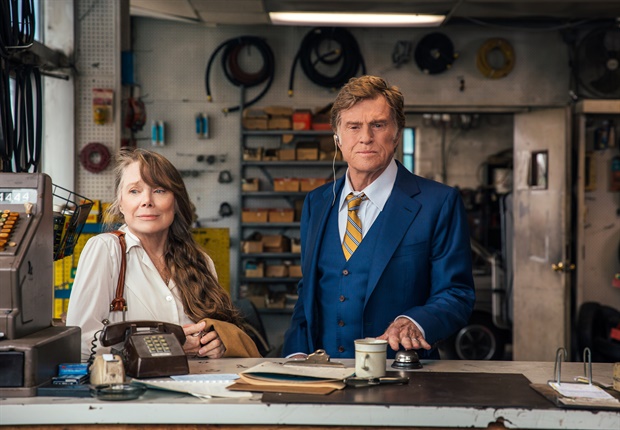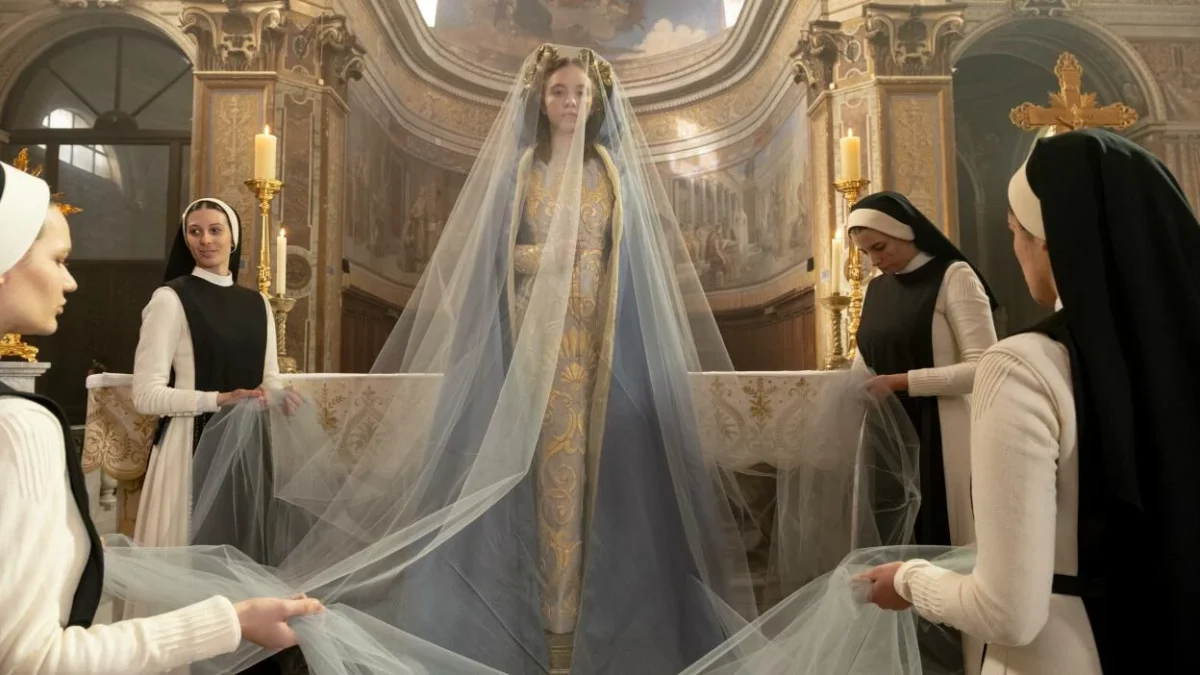Think about the last date you were on — the slashing romanticism, the dive-bomb interest, the earnest conversation. In The Old Man & the Gun, the new film written and directed by David Lowery, Robert Redford, now a creased old man of yesteryear, adds to the list of first-date novelties the hearing-aid routine. And the appropriate response to this obvious physical gimmick is not to cringe but to relish.
Redford plays 70-year-old bank robber Forrest Tucker, and when Lowery’s film opens, we are mid-crime. Staring at the back of Redford’s swept locks, arm at an angle, teller loading a bag, we not only get visual eponymy but tonal definition. The Old Man & the Gun seems to be the perfect film for the craggy and wizened Redford, who is cast as a sort of echo of past charisma miraculously (and enjoyably) retaining its shape. The film is based on true the story of Forrest Tucker, the sort of character who’s a mix between Hunter S. Thompson and Jason Statham’s character in Crank. He needs to rob banks to stay alive, to feel alive, otherwise he will wither away like the rest of the gainfully employed. When a policeman confronts him about his proclivity, claiming he could certainly find a better way to make a living, Forrest responds: “I’m not talking about making a living, I’m just talking about living.”
But Lowery never ventures into the corny, one-note universe of born-to-be-wild banality that has seemed to saturate films of a similar subject; instead, the crackles of Yule-log dialogue, along with the gentlemanly Redford, pin up the film as a relatively convincing sketch of the way things were. Forrest is not a bad boy, and our relationship to him resembles Nick Cage’s relationship to Elizabeth Shue in Leaving Las Vegas. One takes the other at face value, and instead of trying to change them, simply enjoys their aura and presence.
Maintaining an improbable, catch-and-release relationship with prison (he’s broken out 16 times), Forrest has continued to gently deplete banks of small amounts across the United States. Much like the Howard brothers from Hell or High Water, Forrest never gets greedy, taking only small amounts of unmarked bills.
After the first robbery of the film, Forrest meets Jewel (Sissy Spacek), whose equally worn face and steaming truck invite him to come to her aid on the side of the road. The two develop a relationship, and the chemistry between Redford and Spacek is better than anything you’ll see on Valentine’s Day. It’s a cute intermingling, each person brimming with experiences that, at their age, no one wants to bore the other with. Their relationship exists in the present, because the past becomes maudlin and nostalgic, and both actors bring a fresh vitality that inverts their physical appearance (Spacek has begun to form a wonderful habit of this by now, while Redford gives a novel performance, his best in recent memory).
But as Forrest and Jewel take the film into what looks like a latter-stages rom-com, their sense of extant vitality is counter-distinguished by Dallas PD detective John Hunt (Casey Affleck), who has just been knocked into his forties by, to quote Updike, “a sideways blow.” We see a similarly apathetic and dejected Affleck as we did in Manchester by the Sea, and with each performance, including this one, Casey leaves his brother farther in the dust. A Ghost Story, Lowery’s first film and my favorite of 2017, is an entrancing meditation on grief and love, and in it Affleck exudes more convincing pathos through a sheet than most actors ever do.
Realizing he must be proactive, Affleck decides to try to catch the “Over-the-Hill Gang,” as Forrest and his two crew members (Tom Waits and Danny Glover) are named, and simultaneously recapture his vitality. As the crew continues to rob, with a few gruff interludes by Tom Waits, which make for some of the best moments of the film, Hunt begins to follow in temperate pursuit. The foreground comparison between Forrest’s implacable spirit and Hunt’s sagging one, dispensed with measured energy, allows the film to develop opposite the hard-boiled into a disarming display of acting and wit. The lack of relentless plot and a constrictive script gives The Old Man & the Gun a free-flowing, discursive quality that grants us room to meditate on its denser ideas without becoming cold to the touch.
In a scene near the end of the film, we cross the threshold into Forrest’s reverie. Whereas before we saw him as a quaint, Newman-esque criminal, in his blue suit and hat, we now see the tired and weary dynamo he inevitably is. As Jackson C. Frank’s “Blues Run the Game” plays, Lowery takes us from amused witness to loving compatriot. In a few slow, elegiac frames, the line between character and actor is erased as Forrest, in one of the more “meta” moments in recent film, takes a visual accounting of his life, his career and, unfortunately, looks towards the unfavorable horizon. It is a remarkable sequence, as if Lowery took the significance of his actor’s pedigree and scattered its light to show us the granular texture. In the space of the film’s melancholic present, we are perched on a hill overlooking Forrest, and it’s impossible to avoid, Robert Redford’s great run. What will, ironically, be Casey Affleck in forty years, we recognize on screen as a cadre of consummate professionals (Redford, Spacek, Waits, Glover), imbuing every age, image and dimension of human character with a vitality and power you can only get on film.
The 1975 advertisement (Three Days of the Condor) professing the executive beauty and skill of Robert Redford was popular, but ultimately limited because of Redford’s seemingly eternal youth. Now we get a reflective Redford, and realize, as we sometimes fail to do, that our icons are privy to the same rough, temporal bracketing as we are. Redford shows us a bone-deep sadness for the end, the healthy man’s deflection of it, and a deep gratitude for a rich and textured existence. His multi-dimensional performance could have been executed by a slim few, perhaps only Redford himself, and we feel that as deeply as he seems to feel the impending dimness.
Forrest Tucker, when he was arrested for the last time, was smiling. After heeding Kerouac, as well as Dylan Thomas’s advice to live mad and rage against the dying light, Forrest enters the last part of his final act. We never see the end, and assume Forrest (nor Redford) will never find a direct way to it either. But as you slow up at the finish of The Old Man & the Gun, having moved through all of its emotional progressions, spiced with humor and humility, you yourself cannot help but do one thing: end up smiling.







